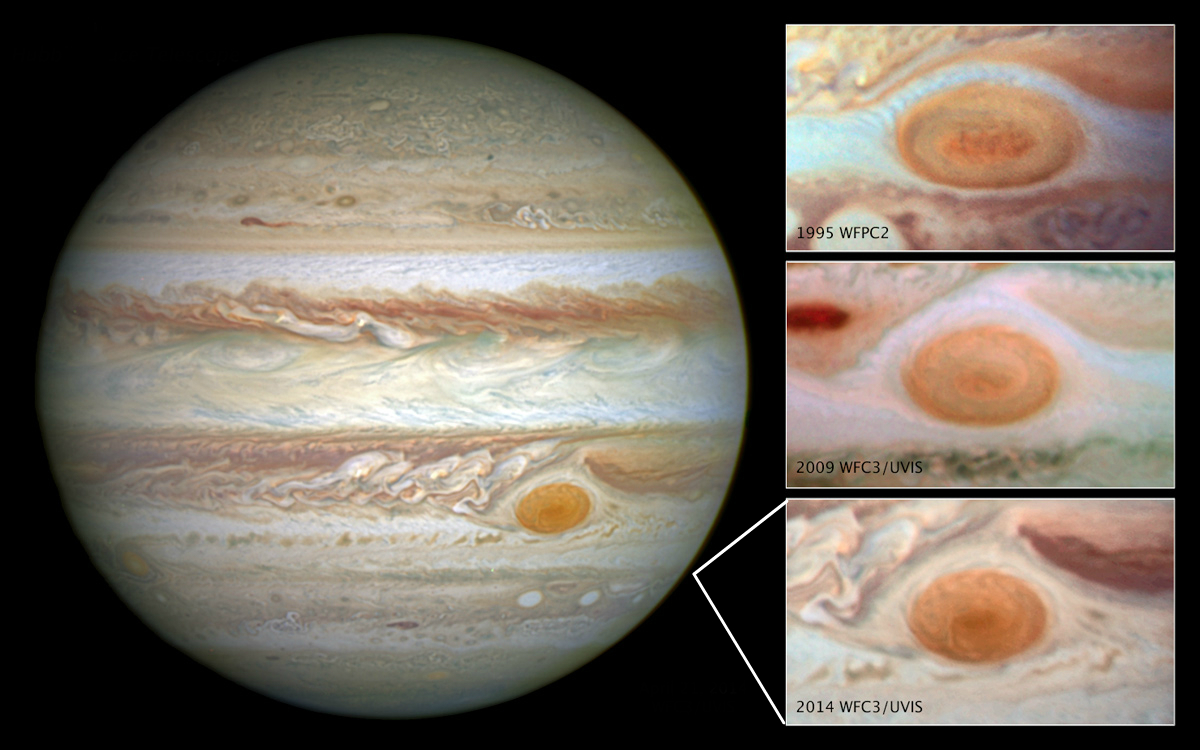Because according to reports from NASA, the mighty gas giant’s most prominent feature, the Great Red Spot, is rapidly shrinking.
 |
| Shrinking red spot: Jupiter's mega-zit could soon be a thing of the past |
But the reasons behind its sudden reduction are causing space scientists to scratch their heads.
If not their spots.
Maybe Jupiter stopped eating so much chocolate between meals.
Maybe it started going to bed at a sensible hour.
Maybe it did all the other things parents nag their adolescent offspring about when said offspring break out in spots. Like washing its face more frequently than once a fortnight.
Maybe it switched to a new brand of spot cream – an intergalactic-sized tube of Clearasil, perhaps.
Or maybe Jupiter is simply growing out of its spot, just as parents promise teenagers will happen when nothing else seems to work.
As with humans, though, very little is certain in the field of interplanetary dermatology. Spots can come back to haunt you even when you’re quite grown up, and it already appears that a new crop of red blemishes may be welling up around the fast-shrinking big one.
So it looks as though Jupiter is going to have to keep up with the interplanetary cleansing, exfoliation and moisturising for a little bit longer yet.
What is certain, though, is that all this upheaval in the swirling clouds of Jupiter has absolutely nothing to do with fracking, or melting ice caps, or deforestation of the rain forest, or any other human interference.
Or has it? Another fascinating science report suggests a more troubling explanation for Jupiter’s recent facelift.
Readers will no doubt be familiar with the Breit-Wheeler Process, by which matter can – at least theoretically – be created by ramming two particles of light together to create an electron-positron pair. If not, where have you been since 1934 when it was first thought up?
 |
| A photon generator unit, yesterday. |
It seems that the denizens of Jupiter may have got wind of this.
Deep within the Jovian maelstrom, Academician Tharg is preparing his photon generator. He points one end at the other, closes a switch and stands back, his mauve protoplasm throbbing in anticipation at the prospect of an infinite supply of free matter.
A hideous crash rends the firmament. Technician Groll dashes into Tharg’s laboratory, her tentacles a-quiver.
“Sir, sir!” she screams. “Look outside! The Great Red Spot – it’s shrinking!”
Tharg smiles grimly. In the cause of pure science, he has disrupted the very fabric of the universe. But on the plus side, he has discovered the perfect spot cure.
The only trouble is, we mere humans will have to go all the way to Jupiter to buy it.

Photon generator no good here - wrong plug...
ReplyDelete